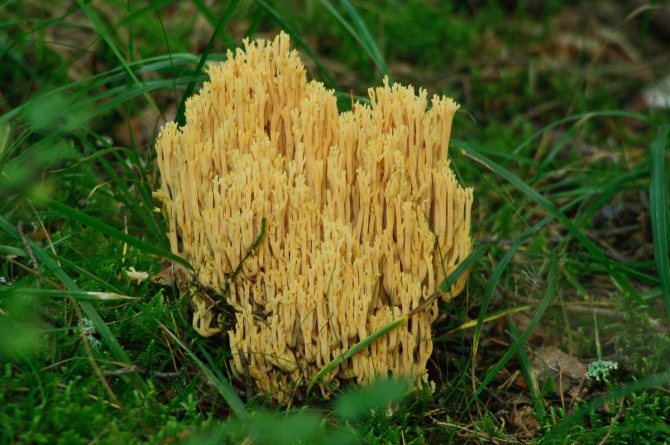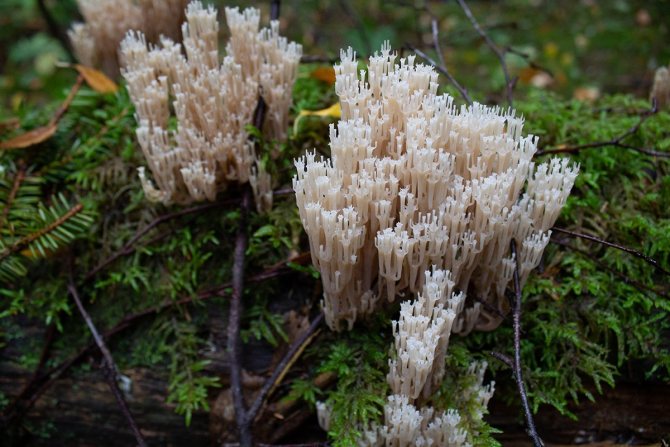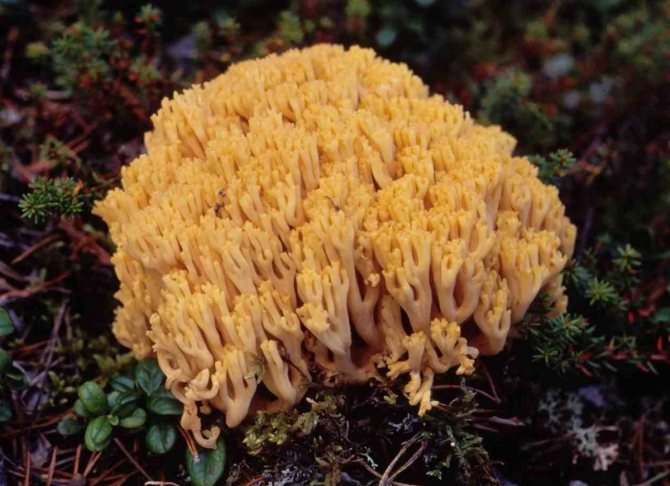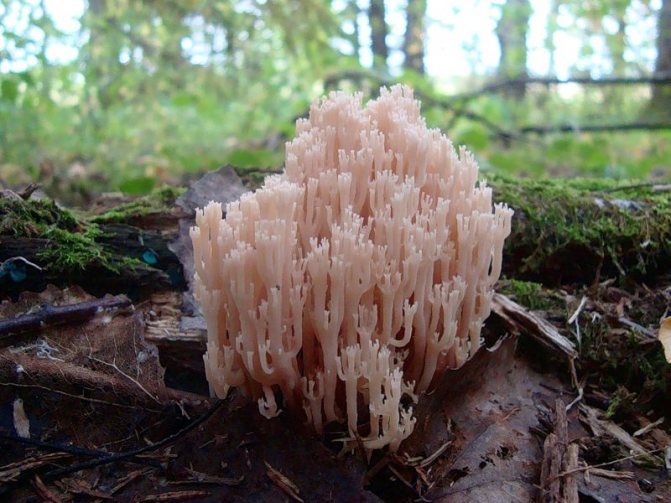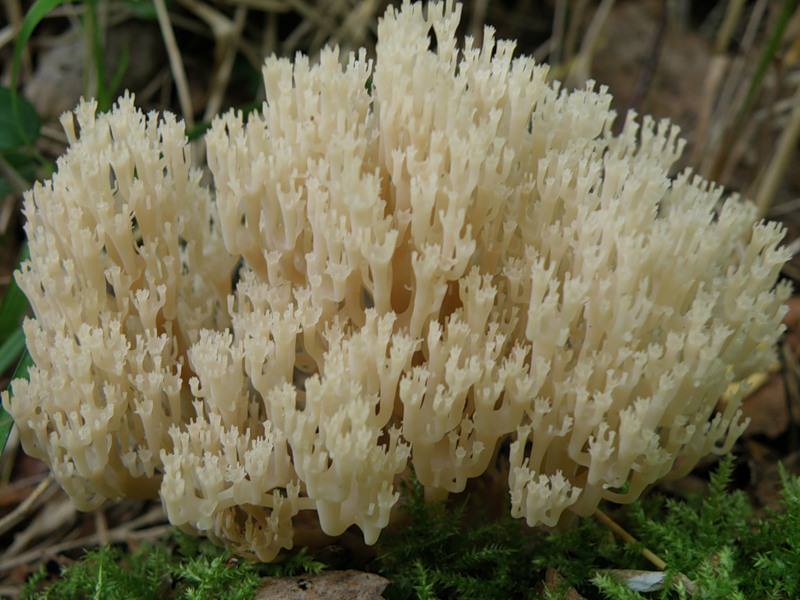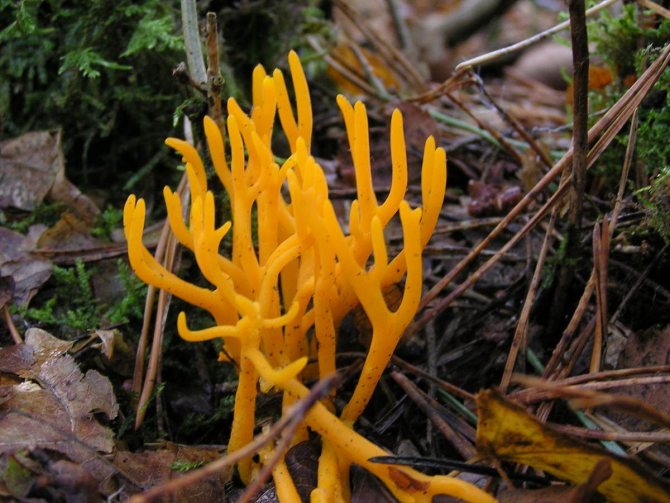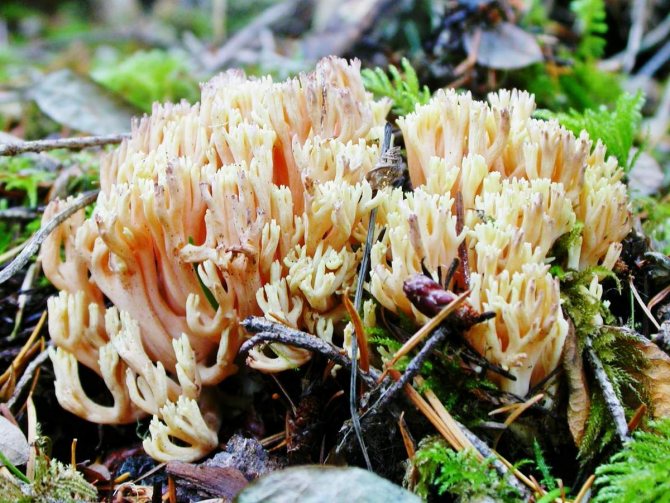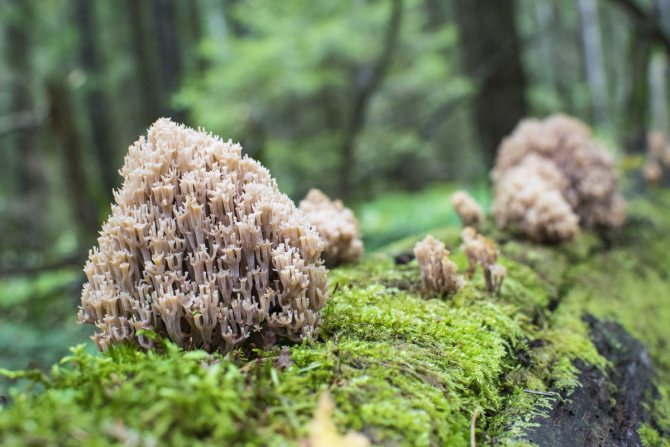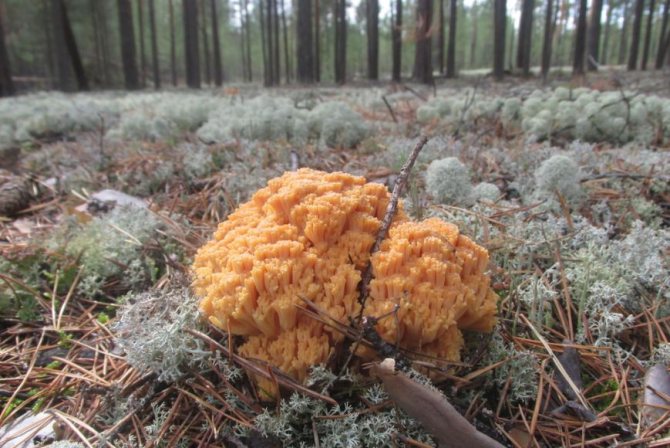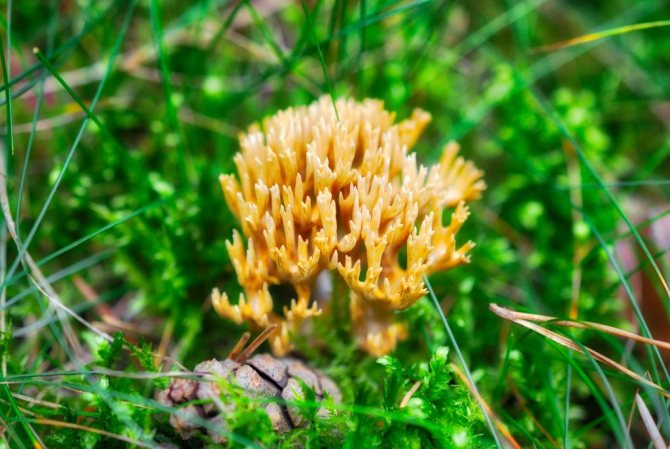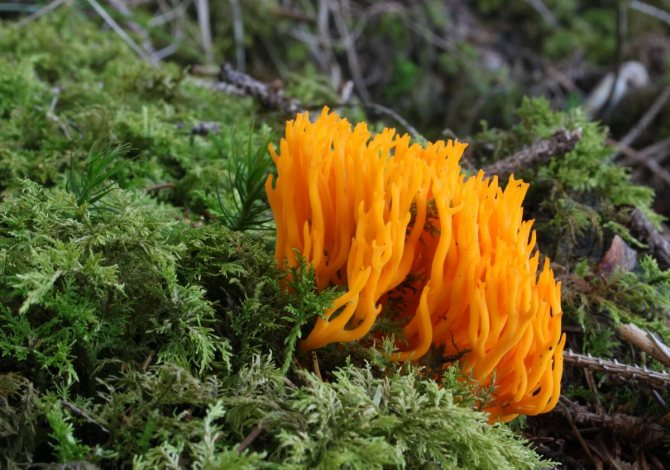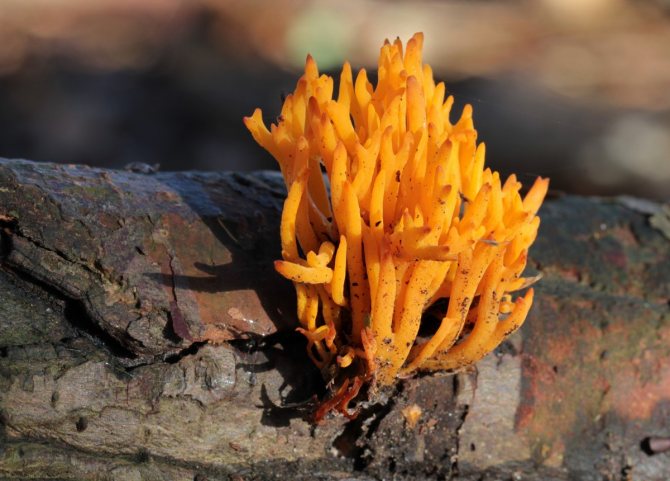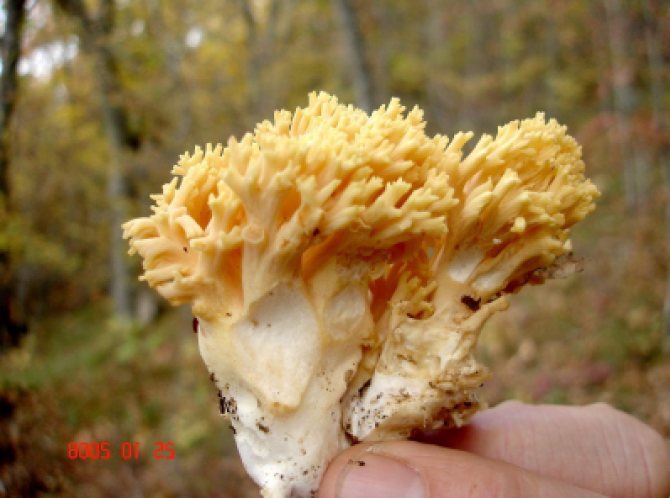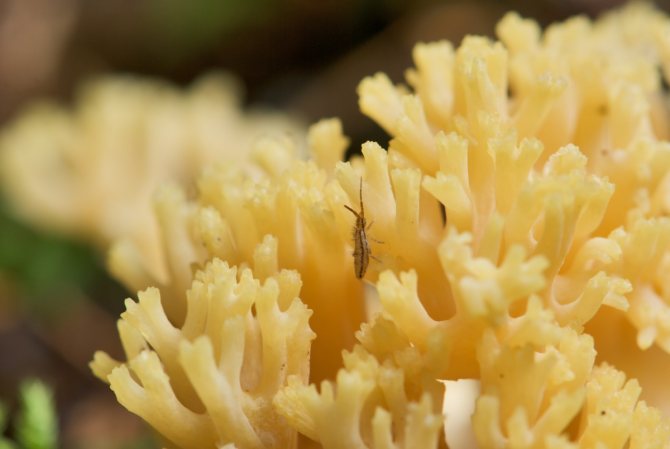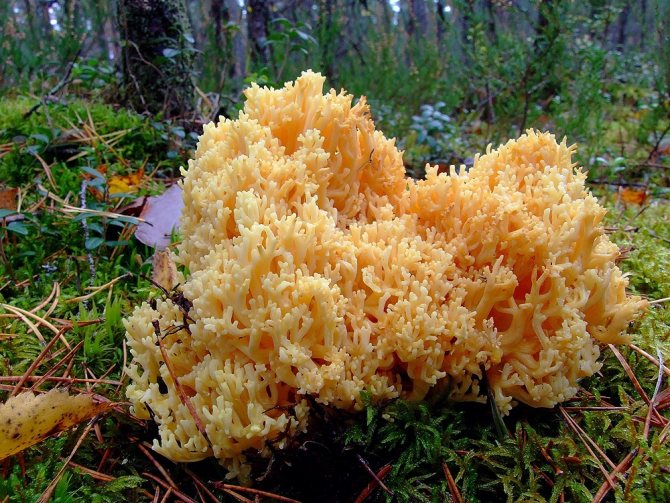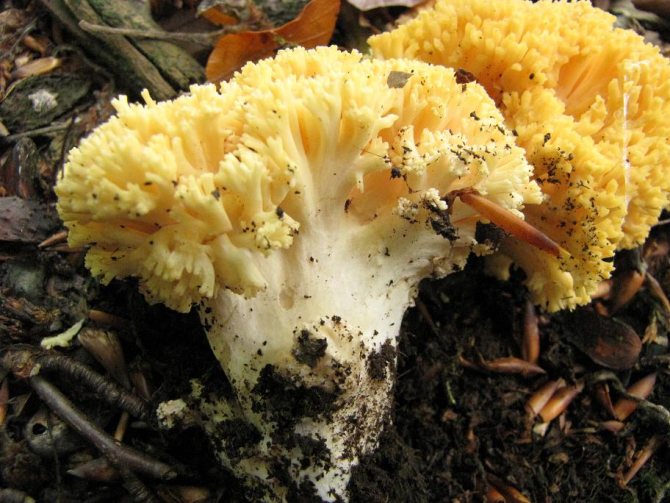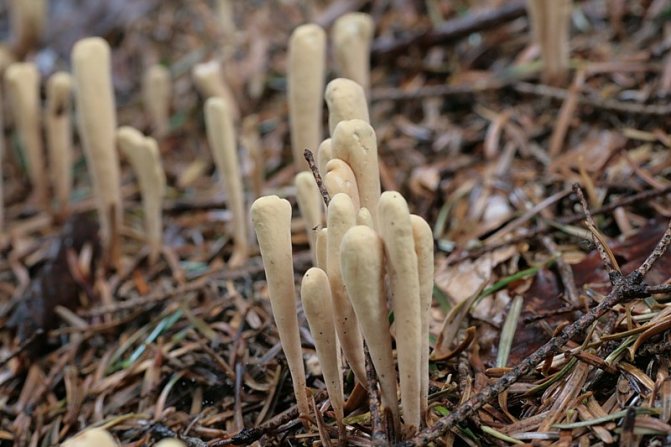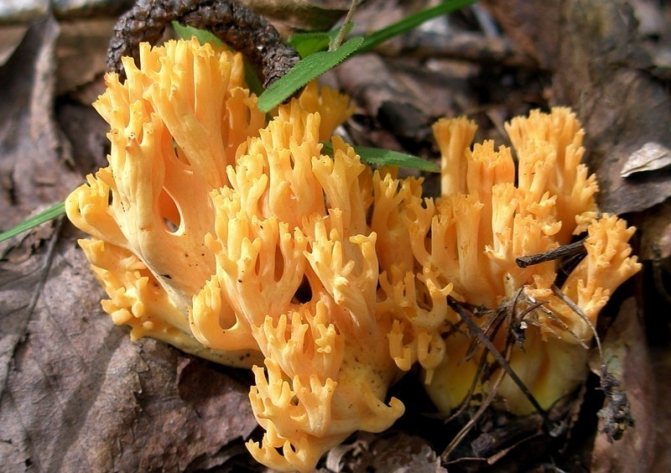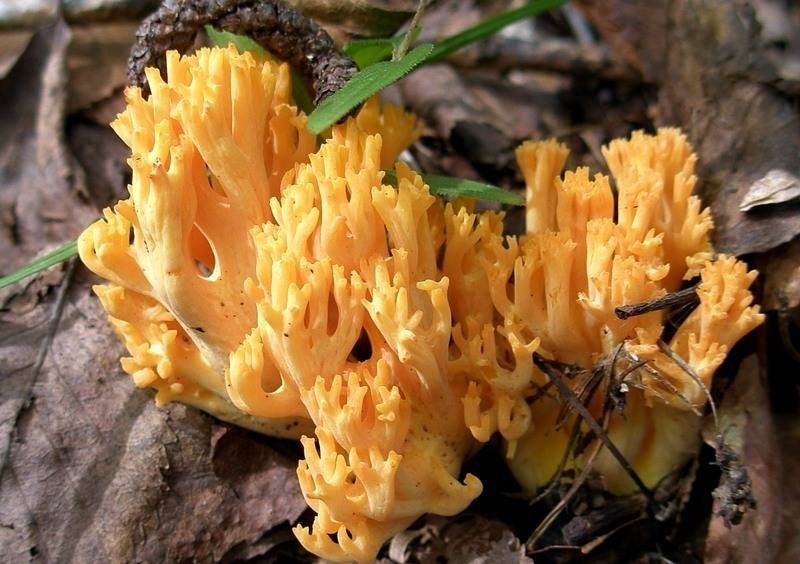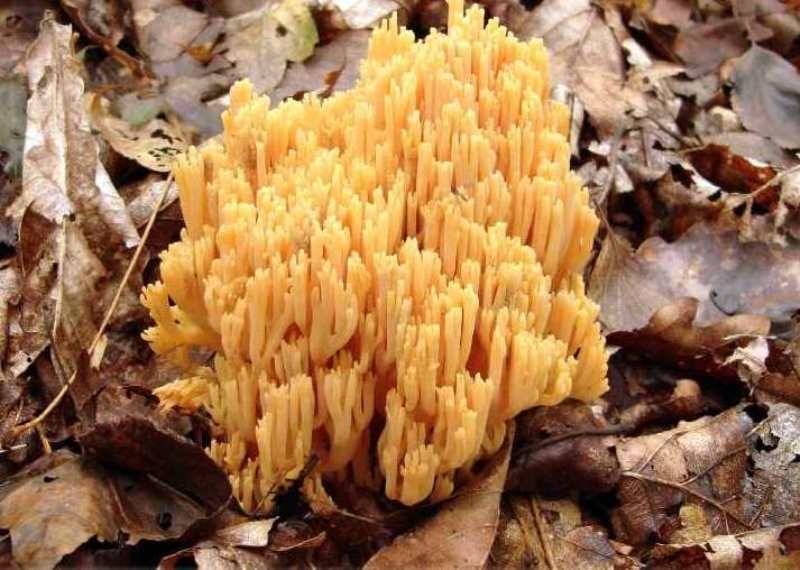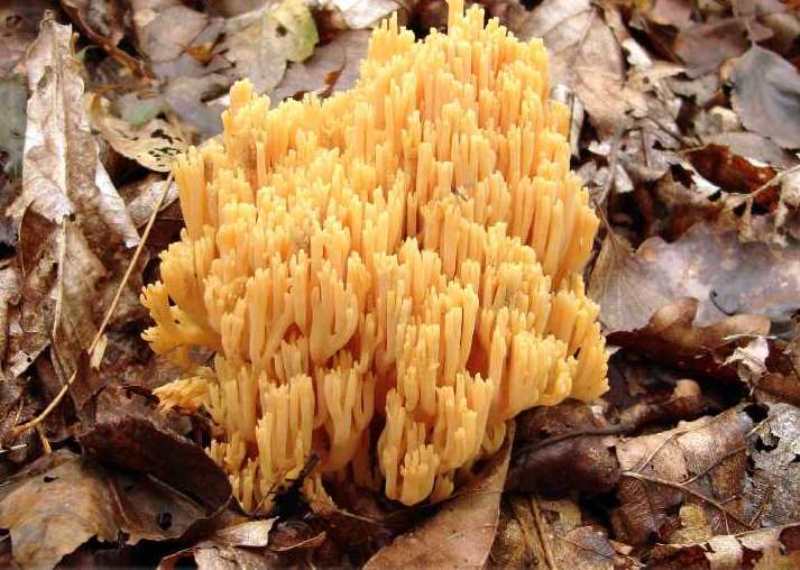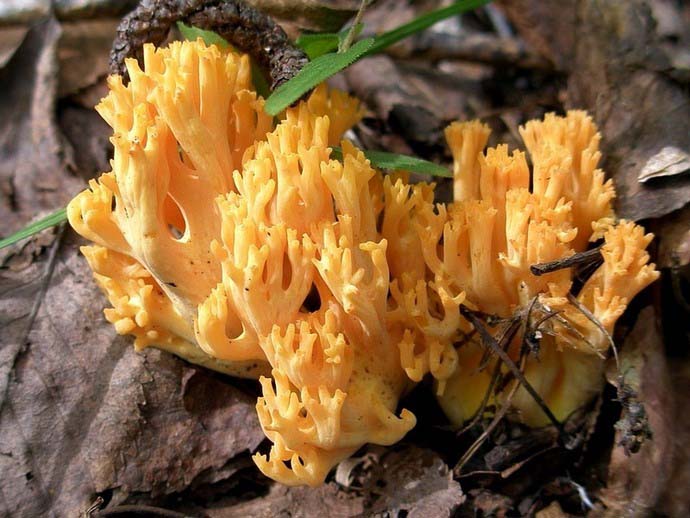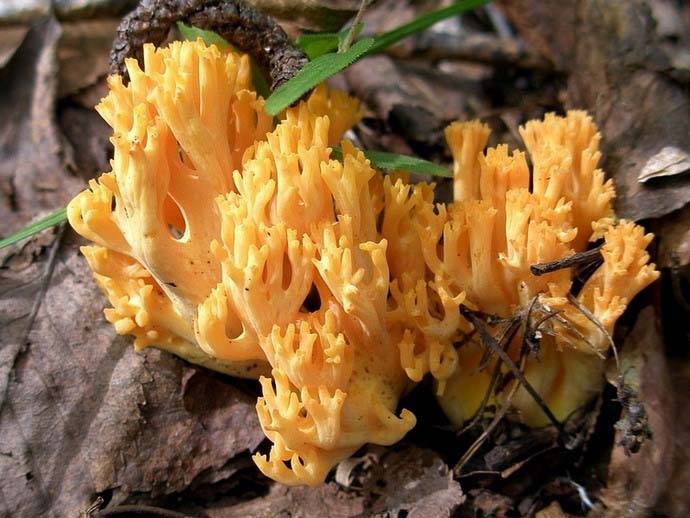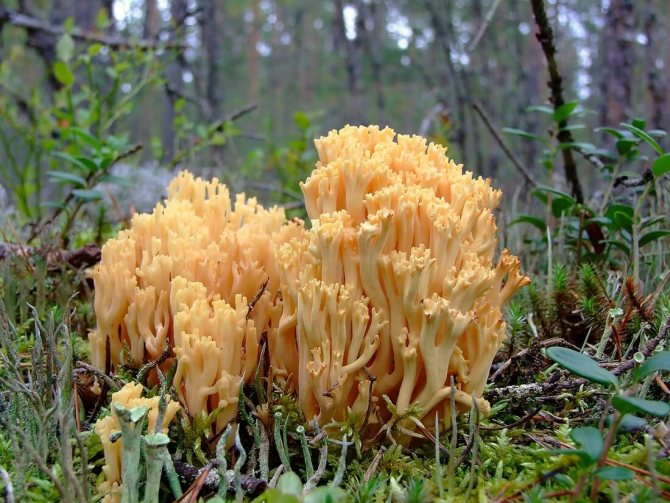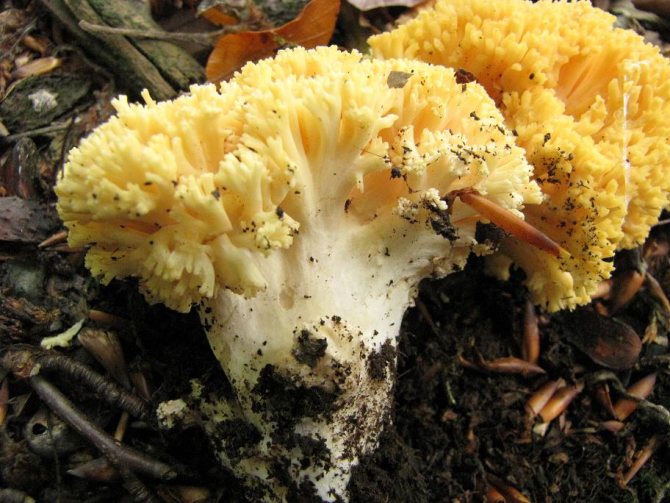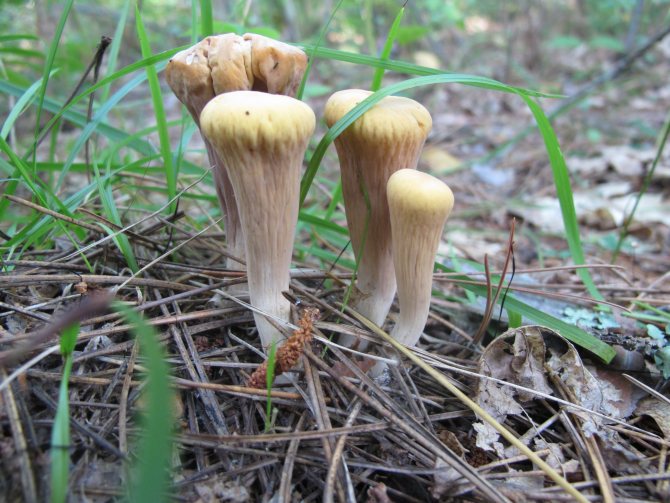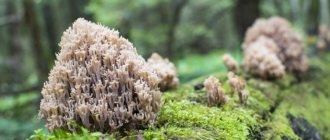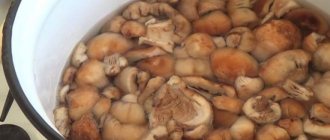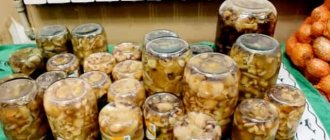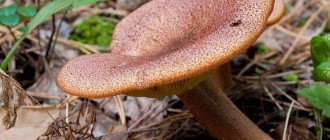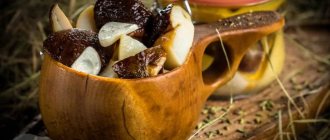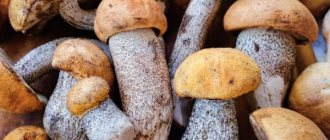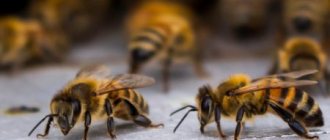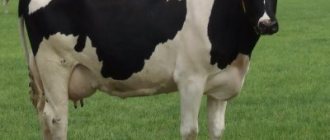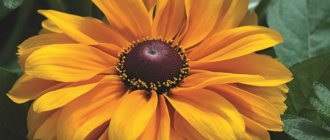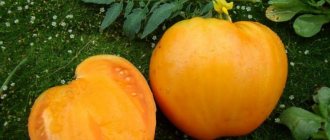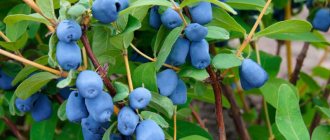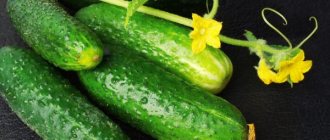Home »Cooking
Cooking 12/11/20195Print
The antler mushroom (coral, horned) is scientifically called golden ramaria or yellow ramaria. The fact is that these are two different species, but so similar that only experienced biologists in laboratory conditions can distinguish them. Morphological data and taste in these varieties are almost identical. Antlers mushroom can often be found in pine forests on white moss. Very large specimens are often found - weighing about 1 kg. Sometimes, in order to prepare dinner for the whole family, just a few horns are enough. Worms do not infect this macromycete, with the exception of the wireworm. An interesting fact is that many "quiet hunters" pass by these amazing mushrooms, not even suspecting that they are edible.
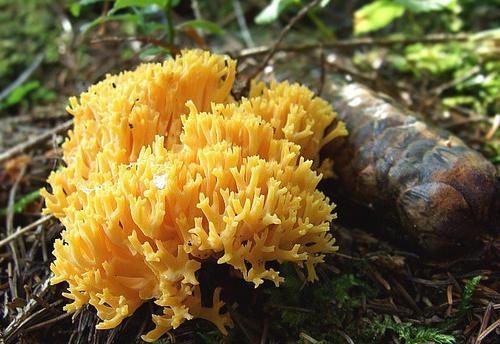
Edibility
Antler mushrooms, despite their exotic appearance, are edible. They belong to the fourth mushroom category. It is best to eat young specimens. Old mushrooms have an unpleasant aftertaste and bitterness. The antler mushroom is used in cooking for the preparation of various dishes. It can be salted, fried, cooked into soup, but the slingshot is best suited for preparing second courses. Reindeer horns taste like chicken or shrimp (depending on the cooking method). They have unusually tender flesh.
Description
Reindeer horns are mushrooms, whose body grows vertically and resembles branching sea coral or antlers, for which they received their popular names. The average specimen reaches 7-16 cm in width, however, there are mushrooms exceeding 20 cm in width. An interesting fact is that their height, as a rule, coincides with the width. The color of the slingshot is yellow, golden yellow or light brown. In older specimens, it is bright orange.
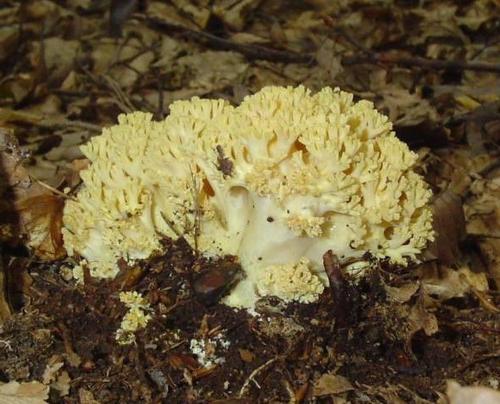

The pulp is golden-white, watery, very fragile and tender, with a pleasant smell. In air, when broken or cut, it quickly changes color to brown (with a red tint). In overripe mushrooms, when pressed on the stem, the pulp becomes red or blood-red. The fruiting body consists of many branches with blunt tips. Outwardly, macromycetes resemble coral. Its surface is dry, smooth and matte.
Spread
The antler mushroom is common in the temperate and northern zones of Eurasia and North America. Grows in groups, prefers mossy and moist soil in coniferous, mixed and deciduous forests. Sometimes forms large communities, can grow in rows or arcs, forming "witch's rings". The hornbeam is especially fond of pine forests, but it also does not disdain beech-hornbeam massifs. Found in the lower and middle belt of the mountains. The optimal time for collection is August-October. In the southern regions, antlers are harvested even in winter.
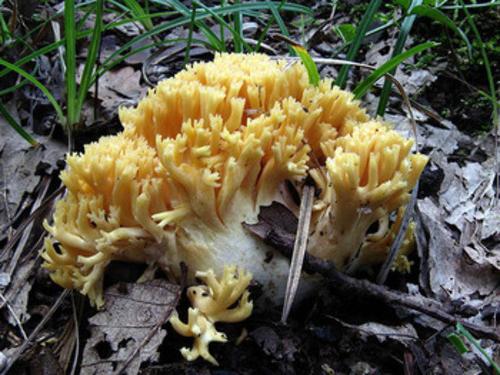

Features of the
Deer horns, or golden (yellow) ramaria, have quite a lot of twins - coral mushrooms similar to them. However, they are all inedible and some are poisonous. For an experienced person, it will not be difficult to distinguish a slingshot from others. However, if the mushroom picker does not have too much experience or is generally a beginner, then it is better not to "hunt" deer horns. Photos of them are available in this article.
The forests of Russia are full of bizarre macromycetes. Due to its unusual appearance - similar to deer antlers - the mushroom of the department of higher fungi of Basidiomycetes got its name deer antlers. There are several more names for this fruit - horned, coral-shaped hedgehog, coral, etc.
Having met a slingshot in the forest, not every mushroom picker dares to cut it. This is due to its rather exotic appearance. This species is considered edible, and therefore, before being included in the Red Book, it could be collected and prepared in a variety of ways.
Characteristic features of the variety
The coral's botanical name is Ramaria yellow, which belongs to the Horned family. The slingshot shape resembles branched deer antlers or underwater coral.
Description of deer horns and photo of a mushroom
The photo clearly shows that the ground part of the deer antlers mushroom is very branched.
Its color depends on several factors:
- habitats;
- climate features;
- age.
Branches can be colored beige, light brown, light yellow, orange or purple. Basically, the height of the fruiting body does not exceed 7 cm, but the width varies from 15 to 30 cm. When pressing on the fruit, a light brown tint appears. The cuticle has a marbled yellow color. The mushroom has a pleasant aroma that resembles the smell of freshly cut grass.
Morphology
The tops of old horned horns accumulate substances that give it a bitter taste. Therefore, the upper branches are not used for food. The mushroom itself differs in taste from its congeners, because it does not have a pronounced mushroom taste. Raw slingshots are quite elastic, and after cooking they become harsh.
Very similar to golden-yellow ramaria hedgehogs. The differences between these specimens can only be seen under a microscope. Nothing terrible would have happened if you cut off the double, because both ramaria are edible.
Place of distribution
This species is extremely rare. You can find such a treasure in the regions of the Far East, Karelia, the Caucasus, Western and Eastern Siberia, as well as in the Crimea. Most residents of the central part of our country do not even know about the existence of such "forest bread".
This is due to the peculiarities of the growth of horned beetles. They live in humid and shaded places. Most often they can be found in a pine or deciduous forest, where the most valuable specimens grow.
Edible or inedible
Horned beetles are both edible and inedible. In this regard, you should carefully study the yellow ramaria so that you can distinguish it from other relatives. All the black man's twins are moderately poisonous or conditionally edible, so eating them cannot be fatal.
Ramaria yellow is an edible mushroom, but it is important to follow some precautions before eating. Only the base is used for cooking, because the branches have a bitter taste. Overripe fruits are considered unsuitable due to the large accumulation of bitterness.
Cooking meals
Every mushroom picker is interested in how to cook reindeer horns. There are not many recipes where they are used as an ingredient. But the basic cooking methods are the same as with other mushrooms. Those lucky enough to find them can make some delicious dishes out of them.
Where and on what trees do oyster mushrooms grow in the forest
Mushroom salad
This nutritious and wholesome dish is sure to brighten up any meal. To prepare it you will need:
- mushrooms (boiled) - 200 g;
- garlic - 2 cloves;
- onion head;
- carrots - 200 g;
- apple cider vinegar 6% - 1 tbsp;
- vegetable oil - 1 tbsp;
- salt to taste;
- greens;
- black pepper.
Cooking method:
- Chop the mushrooms and combine with finely chopped carrots and garlic.
- Add salt, pepper, half a tablespoon of vinegar to the mixture.Pour in oil and leave for half an hour.
- Pour the onion cut into half rings with the remaining vinegar.
- Mix all ingredients and add chopped herbs.
Fried slingshot
For frying, you need to take dried mushrooms. Before cooking, they are soaked in water for 1 hour to swell.


Squeeze the mushrooms and cut into small strips.- Put butter in a preheated pan.
- Put the hornets in a frying pan, season with salt and pepper and cook for 10 minutes over medium heat with the lid closed.
- After that, evaporate the excess liquid and cook without a lid for 5-10 minutes.
You can add onion and parsley to taste, and take vegetable oil.
Those who have tasted and appreciated the dishes made from reindeer horns, no doubt, will not leave them without attention. And every slingshot you meet in the forest will cheer you up, like a good friend.
Array
Answers to common questions
The unusual shape of mushrooms raises a lot of questions from mushroom pickers:
When collecting any mushrooms, some rules should be strictly observed: the crop is cut, not plucked by the root; the soil and moss in the forest should not be stirred up or dug up too much; picking mushrooms in reserves is prohibited; mass collection of any species will certainly lead to its extinction.
The rubbery flesh of a calocera has a reddish tint. The false mushroom has no taste and smell. The fruit body has pointed branches and is colored dark yellow or orange. True yellow corals are very similar to calocera, for which the cartilaginous and gelatinous consistency of the fruit body is not characteristic.
The coral hedgehog is one of the more unusual members of its family. It is famous not only for its interesting shape, but also for its good taste. But when collecting this species, you should be extremely careful, because it can be easily confused with false corals.
| Name: | Deer horns |
| A type: | Edible |
Reindeer horns need to be cooked correctly. The main condition is the use of young specimens. The product can be salted, fried, dried. The slingshot tastes like chicken or shrimp. The pulp is tender. The official name is Ramaria yellow. Grows in deciduous and mixed forests. The best time to harvest is late August or early September.
How to distinguish from false, poisonous mushrooms?
It is important to remember that horned horns have a lot of twins, which belong to the inedible or even poisonous representatives of the mushroom world. The first thing to look for when collecting is the color of the bush. At a young age, mushrooms are colored milky, beige or yellow.
Older specimens, which are considered inedible due to bitterness, are bright orange in color. The place of the cut becomes a marbled yellow hue, and when pressed on the fruiting body, a light brown hue is formed. The smell of a mushroom is very similar to that of cut grass.
Description [7] [edit | edit code]
The hat is 4-10 (15) cm in diameter, in some specimens it can reach 24 cm [1]; broadly bell-shaped, then convex or flat-spread, with a faintly marked tubercle in the center. The surface of the cap is smooth, silky; radially fibrous, often radially cracking at maturity; dry or slightly mucous (in wet weather). The color of the cap is usually gray, greyish brown, although it can range to dark brown and black; in the center, the cap is usually darker, striped along the edge, slightly ribbed; tends to fade in dry weather.
The pulp is white, soft, brittle, fibrous in the stem, tough, without a special smell and taste, or with a weak radish odor. When cut, the color of the pulp does not change.
The plates are 10-15 mm wide, frequent, free at the stem, rounded at the edge of the cap, wide, thick, whitish in young mushrooms, then, as the spores mature, pink, in old mushrooms, meat-red.
Stem 5-15 × 0.8-2 cm, cylindrical, dense, solid, white or whitish-gray, with longitudinal brown fibers, which usually brighten towards the cap, less often with a moire pattern, often slightly swollen, clavate at the base ; it can be strongly curved. Easily detaches from the cap.
Spore powder pink. Spores 8-9 x 5-6 microns, short-ellipsoidal, smooth, pinkish. Cystids with thick walls and apical appendages ("horns").
Growth [edit | edit code]
Saprophyte mushroom. Widely distributed in the northern temperate zone. Grows in deciduous, less often coniferous, forests, parks and gardens on decaying wood of all types, including rotting stumps, trunks and branches of deciduous trees (birch, oak), sometimes coniferous (pine) species, deadwood, heaps of bark, rarely found on the ground near stump. It develops abundantly on sawdust and wood chips. It is especially common in areas of felling. Grows singly or in small groups. In Russia, it occurs from late May to late October; in the middle zone of the European part of Russia, it is most abundant from mid-June to early July and from late July to late August. Common even in dry years.
Characteristics of inedible deer horns
There are several varieties of mushrooms that, in appearance, and sometimes in smell and taste, can be very similar to yellow horned heads, but are not eaten due to toxicity or unpleasant taste.
Clavulina coral
Found in deciduous forests from July to October, most of the fruits can be found in mid-September. It is characterized by flat scallop twigs. The base of the mushroom forms a small stalk up to 5 cm. The comb tops are white or cream. It was not used in cooking due to its low taste and bitterness.
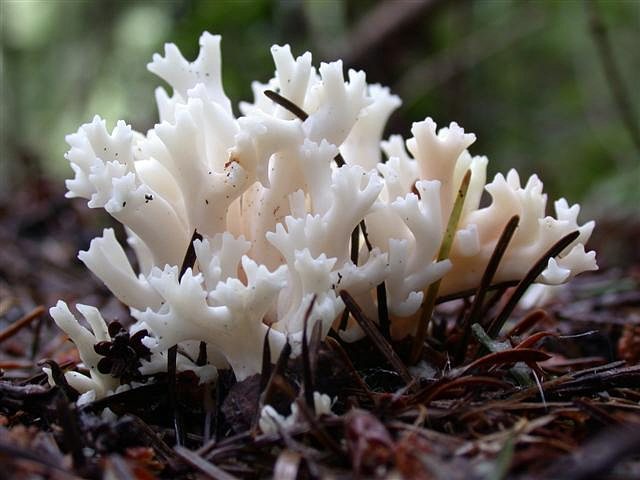

Clavulina coral
Ramaria is beautiful
It is a poisonous variety that disrupts the digestive tract. Differs in such structural features as:
- height up to 20 cm;
- bright pink in unripe fruits and brown-brown in old ones;
- dense and massive leg;
- highly branched processes.
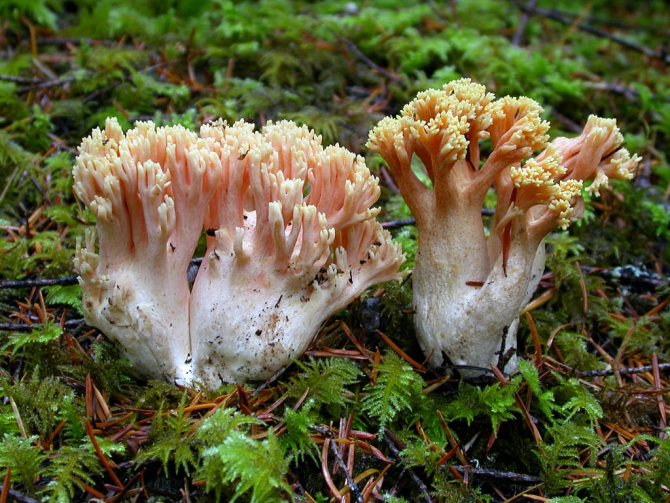

Ramaria is beautiful
Ramaria is tough
The fungus is characterized by a large number of branches of the same height. The place of damage is painted in burgundy red. The diameter of the ramaria stem is no more than 1 cm, the height is up to 6 cm. Near the base of the stem, clusters of mycelium in the form of thin filaments are found.
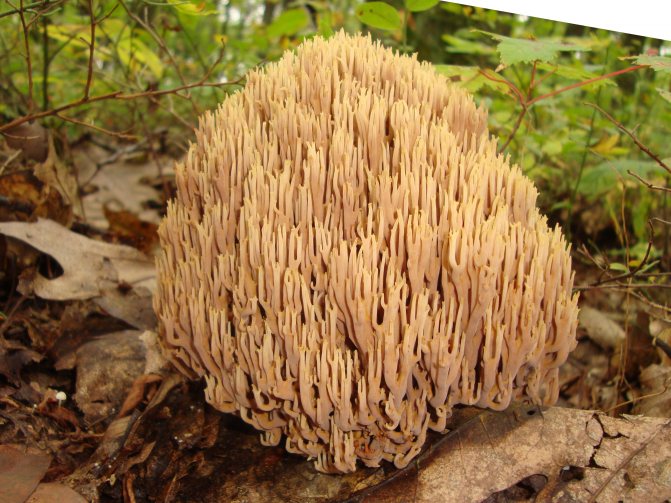

Ramaria is tough
Fawn horned
Another name for the mushroom is fawn clavulinopsis. Reaches a height of 3-6 cm, less often - 10 cm. Mushrooms of this variety stretch into an oblong stem with a diameter of up to 1 cm. The shape of the mushroom is simple, slightly branched. The color is usually deep yellow, but the base is light. Fawn horns appear in August-September.
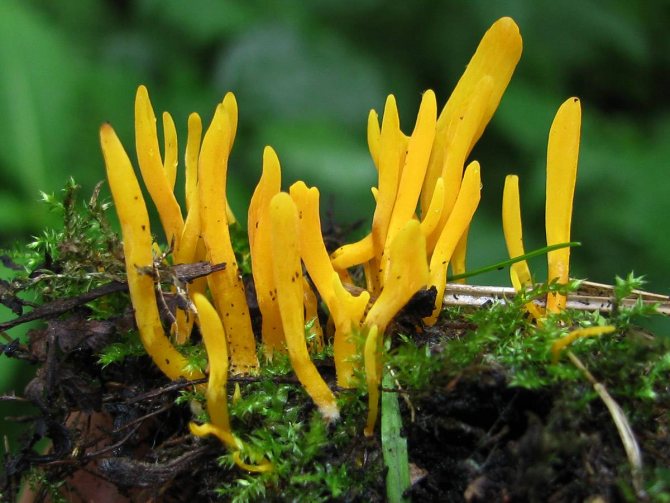

Clavulinopsis fawn
Similar species [edit | edit code]
There are more than 140 species of the plyutei genus, some of which are difficult to distinguish among themselves.
- Black-sided plute, Pluteus atromarginatus (Singer) Kühn. , Is a more rare species, which is distinguished by a blackish cap and darkly colored edges of the plates. Grows on semi-rotten coniferous trees.
- Pouzar's worm, Pluteus pouzarianus Singer, is distinguished by the presence of buckles on the hyphae, which is distinguishable only under a microscope. It develops on soft trees, devoid of a distinct odor.
- Similar representatives of a related genus Volvariella
differ in the presence of a Volvo. - Similar representatives of the genus Entoloma
have adhered plates instead of free ones. They grow on soil. - Collibia broad-lamellar, Megacollybia platyphylla (Pers.) Kotl. & Pouzar, is an inedible or conditionally edible mushroom, characterized by sparse, whitish or creamy plates and characteristic strands at the base of the stem.

